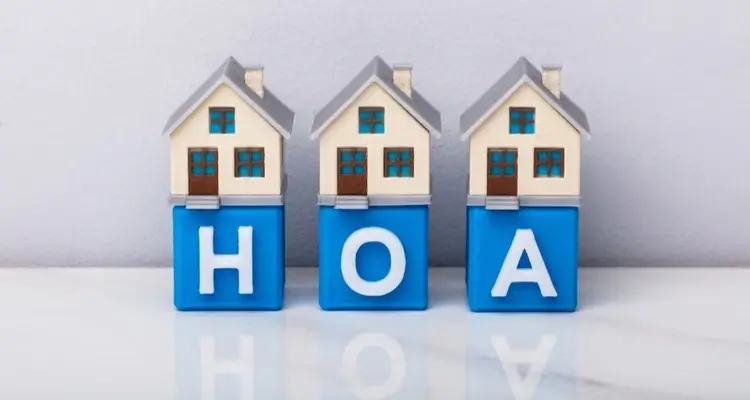
When it comes to your mortgage, as little as a half of a percentage point can mean a savings of tens of thousands of dollars over the life of a loan.
So getting the absolutely best refinance rate is very important!
Here are 13 tips that will help ensure you get the best rates when refinancing your mortgage.
Current Refinance Rates
Refinance Rates (December 2020) | ||
Loan Term | Interest rate | APR |
30-year fixed-rate mortgage | 3.59% | 3.87% |
15-year fixed-rate mortgage | 3.15% | 3.49% |
5/1 adjustable-rate mortgage | 3.52% | 3.84% |
Rate Search: Check Today’s Refinance Rates
Average mortgage rates will change daily if you have an interest rate higher than the current average mortgage rate. It may be time to refinance to a lower rate and start saving thousands of dollars on your mortgage today.
How to Get the Best Refinance Rates Possible
Get a copy of your credit report
According to a study by creditcards.com, 1 in 5 Americans has a mistake on their credit report. Some people believe this number is even higher. Mistakes can lead to a lower credit score, which leads to refinance offers with higher rates. Make sure you contact the credit bureaus to dispute any mistakes on your report.
Improve Your Credit Score
Before applying to refinance your mortgage pull a copy of your credit report to check for any errors. You can get your credit report once a year for free from www.annualcreditreport.com.
Dispute negative items on your credit report If you find errors, you should dispute them with all three major credit bureaus, the credit bureau has 30 days to investigate the accuracy of the item and update the status.
The Credit Bureaus allow all consumers to dispute any item on their credit report they believe is inaccurate. If you have accounts in collections or other negative account information, it is killing your credit score. You can dispute this type of information directly with each Credit Bureau.
The Bureau has 30 days to validate the information you are disputing, or it must be removed by law. The entire credit repair industry is based on disputing negative items and hoping they don’t get verified. Learn more about disputing information with the Credit Bureaus.
Pay down credit card balances – Your credit utilization ratio is the amount of available credit you are using. The higher your balances are to their credit limit the lower your score will be. Pay down your card balances to less than 15% of their limits to increase your score as much as possible before applying.
Do not apply for new credit or loans – When you apply for any type of credit or loan, the creditor will pull a copy of your credit history. This is called a hard inquiry and will negatively affect your credit rating. Wait until after you refinance your mortgage before you buy a new car or get a new credit card.
Pay off the balances on your credit cards – Your utilization ratio accounts for 30% of your overall FICO score. Paying the balances on your cards below 15% of the limit will have a significant positive impact on your credit score.Your credit score will be one of the biggest factors in you getting the best refinance rate. One of the quickest ways to raise your credit score is by paying off the balances on your credit cards. The ratio of the balance compared to the credit limit on your credit cards is known as your credit utilization ratio.
Have someone add you as an authorized user – Banks allow credit card owners to add an authorized user on their account. This person is authorized to have access to the account and use a card. The account will be reported to the authorized user’s credit report. FICO does consider authorized users in their credit scoring algorithm.
If you have a relative or a close friend with a credit card in good standing, you should ask them to add you as a user. You don’t even need to physically have a card, and really you don’t want access to the account. You want the account history on your report to help increase your credit score. This is a quick way to gain a few points on your score before applying for a refinance.
Dispute negative items on your credit report – The Credit Bureaus allow all consumers to dispute any item on their credit report they believe is inaccurate. If you have accounts in collections or other negative account information, it is killing your credit score. You can dispute this type of information directly with each Credit Bureau.
The Bureau has 30 days to validate the information you are disputing, or it must be removed by law. The entire credit repair industry is based on disputing negative items and hoping they don’t get verified. Learn more about disputing information with the Credit Bureaus.
Lower Your Debt
We already spoke about how paying off credit card debt can increase your credit score. But it also lowers the amount of debt you have.
The less debt you have the lower your debt-to-income ratio will be, which results in a lower refinance rate and lower fees because you present less risk to lenders.
If you can pay off credit cards, personal loans, student loans or an auto loan you will greatly improve your debt-to-income ratio so you’ll be offered lower interest rates.
Compare Rates with Multiple Lenders
tep 2. Compare Multiple Refinance Offers
Don’t make the mistake of refinancing your mortgage with your existing mortgage company, or one of the first lenders you talk to. Home refinance rates will vary depending on the mortgage lender you use.
With a mortgage refinance there are closing costs involved that can add up to 1%-3% of the loan amount.
You should get a loan estimate from at least 3 different mortgage lenders to compare the rate and closing costs.
Some fees, even the interest rate can be negotiated down. You can use one loan estimate to get a better deal from other lenders.
Your local bank or credit union can refinance your mortgage, but online lenders may offer the best refinance rates.
Shop and Compare Mortgage Rates
This is one of the biggest mistakes homeowners make when it comes to refinancing their mortgage. Many borrowers call their existing loan servicer and choose to refinance with their current company thinking it will be easier and require less paperwork. The truth is, this could be the biggest mistake you’ll make.
You should get rate quotes from at least 3-4 different lenders. Not only will this ensure you are getting the most competitive rate. You can use those offers and take them to your current mortgage company to match the rate.
Explore your refinance options
Once you’ve maximized your credit score, it’s time to start speaking to lenders and gathering information about your loan options. Are you refinancing from an FHA loan to a conventional loan to avoid PMI? Do you need a cash-out refinance or a home equity loan? There are many different types of refinance loans available, and it’s good to know what you need first.
You may qualify for an FHA streamline refinance loan if you currently have an FHA loan. VA, 203k, and USDA all have streamline refinance programs as well. The Obama Administration created the Home Affordable Refinance Program, A.K.A. HARP, to help people with conventional loans owned by Fannie Mae or Freddie Mae to refinance their mortgage even if they’re underwater on their mortgage. It’s important to know what type of refinance program you need.
Consider a Shorter Loan Term
By getting a loan with a term shorter than the traditional 30 years, you will get lower refinance rates. A 15 year refinance could have a rate as much as a full 1% lower than a 30 year refinance. Your monthly mortgage payment will be higher, but a large percentage of that payment will be going to the principal balance. Paying off your mortgage quicker is always a great investment. Read more about the pros and cons of 30 vs. 15 yr fixed-rate loans.
Shorter loan terms come with lower mortgage rates. Typically, a 15 year fixed rate mortgage has about a 1% lower interest rate than a 30 year fixed-rate loan.
Since you are paying your mortgage in half the time you will save tens of thousands in interest. However, your monthly mortgage payment will be higher with a 15-yr mortgage. Make sure you can afford the higher mortgage payments before refinancing into a 15 year loan.
An adjustable-rate mortgage has a variable rate that starts off low for a period of time, then increases. A 5/1 ARM is the most popular adjustable rate loan. You are able to get a low initial rate for 5 years before it increases.
An alternative to a 15 year loan is to get a 30 year fixed rate loan but pay additional principle each month to have it paid off in 15 years. You will not get a lower rate, but if you run into any financial issues you are not locked into a higher payment.
Don’t forget about closing costs
There’s more to consider when refinancing your mortgage besides the rate. Closing costs are always associated when you refinance. The lender should provide you with an LE, a loan estimate that clearly breaks down their fees and your rate. Closing costs, just like rates, will vary depending on the lender. Make sure you also compare closing costs when shopping lenders.
You have 30 days to have your credit ran without affecting your score
Most people choose not to shop multiple lenders because they’re afraid all the credit inquires will lower their credit score. That couldn’t be farther from the truth. The fact is that FICO, the scoring model that calculates your credit scores, actually want consumers to be able to shop around for the best rates.
Multiple inquires from the same type of lenders during a certain period is known as rate shopping. For mortgage rate shopping, you have a 30-day window to have as many mortgage companies pull your credit report, and it will only count as a single inquiry. It will not negatively affect your score as long as it’s done within a 30-day window. Take advantage! Speak to as many lenders as you can within your 30-day window.
Have all your documents ready
Refinancing your house will require lots of paperwork. You will need pay stubs, bank statements, tax returns, and more. Try to get all of these documents together before starting the process. This will cut down on delays and allow your loan officer to move more quickly.
Lock in your mortgage rate
When refinancing your mortgage loan, timing is everything. Knowing when the rates are at their lowest and when to lock in that low rate is extremely important. Working with your loan officer and responding quickly to any document requests allow a lender to lock in the rate at the right time.
Work with an experienced loan officer
Believe it or not, having an experienced loan officer can help you get the best rate. An experienced loan officer knows when to lock in a rate, types of refinance options that may be best, and other tips and tricks to help you save a few bucks. An inexperienced loan officer could end up costing you in the end.
Refinancing your mortgage loan can be a great way to lower your mortgage payment and interest rate.
Even with just a .5% lower rate you can save tens of thousands of dollars on your home loan.
Getting the best refinance rate can save you a ton of money.
We’ve put together some tips to help you get the best mortgage refinance rates possible.
Rate Search: Check Current Refinance Rates
Types of Refinance Programs
Cash-Out Refinance
If you have a loan-to-value ratio on your mortgage of 70% or lower. You may be able to get cash using your home equity.
A cash-out refinance will pay off your existing mortgage and provide up to 80% of the home’s market value in cash. Requiring just one mortgage payment to cover the home loan and additional cash.
The benefits of a cash-out are that you receive cash that is repaid over the term of the loan for an interest rate much lower than a personal loan or home equity loan.
Home Equity Loans
A home equity loan and home equity line of credit (HELOC) work similarly to a cash-out refinance. However, instead of refinancing your existing loan, you are using your home equity to get a second mortgage.
Home equity loans generally have short terms of 5-10 years. However, a second mortgage is more difficult to qualify for than cash-out refinancing.
FHA Streamline Refinance
If you have an FHA home mortgage you can refinance your loan with an FHA streamline refinance. The streamlined process speeds up the refinancing process and allows for minimal documentation.
Many people who have FHA loans are first-time homebuyers or may not be aware they can refinance to get a better home refinance rate and lower monthly payment. You may be able to reduce your mortgage insurance premiums with a streamline refinance.
VA Loan Refinance
VA loans do not require PMI. If you already have a VA loan there is a VA streamline refinance program available. However, if you do not have a VA mortgage and now qualify for one, you can save money on mortgage insurance by refinancing into a VA loan.
Shop and Compare Mortgage Offers and Rates



